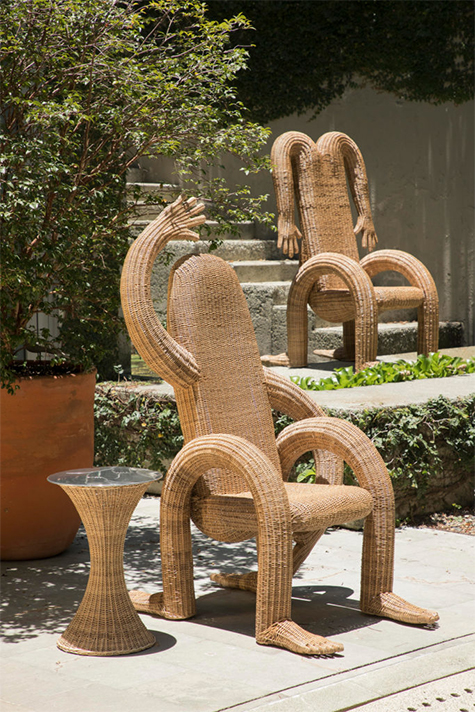
Nalgonas Chairs
Image courtesy of: Surface Magazine
Chris Wolston credits his style to the time he spent in Ghana studying non-Western creative techniques. Additionally, he was awarded a Fulbright grant to “fine tune” his craft in Columbia where he blended ancient South American craftsmanship with postmodern style. The end result is detailed pieces which are delightful and imaginative, and force us to take ourselves a bit less seriously.
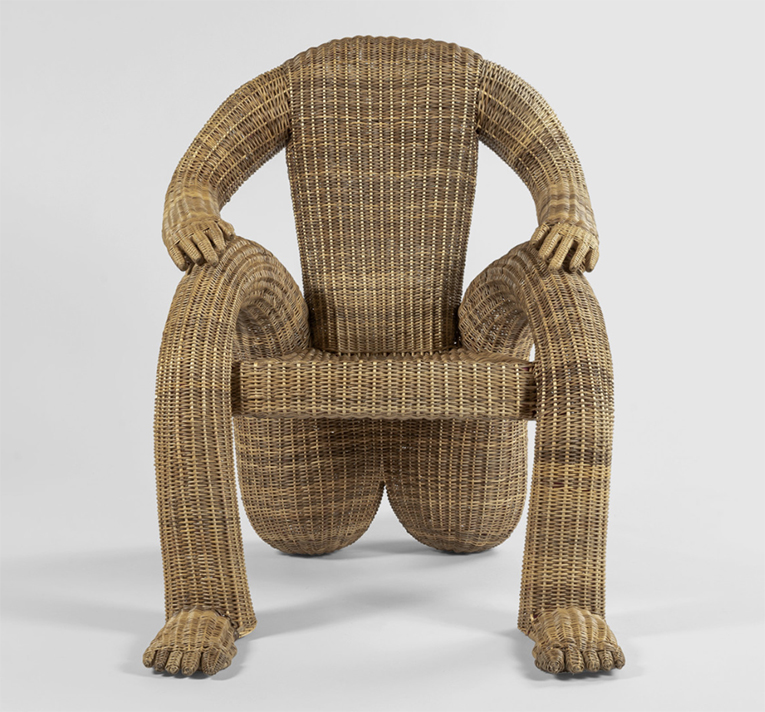
Nalgonas Chair… both soft and strong.
Image courtesy of: The Future Perfect
Wolston’s Nalgona Chairs are wonderful and he certainly succeeded in bringing “joy and humor into people’s lives” with this collection. The chairs are 100% Colombian Mimbre which was harvested in the Colombian Amazon. The chairs “evolved” from the shapes of Wolston’s sand-cast aluminum Orgy tables.
The success of the rattan collection led to a new series of sofas that resemble Dali hands walking through space.
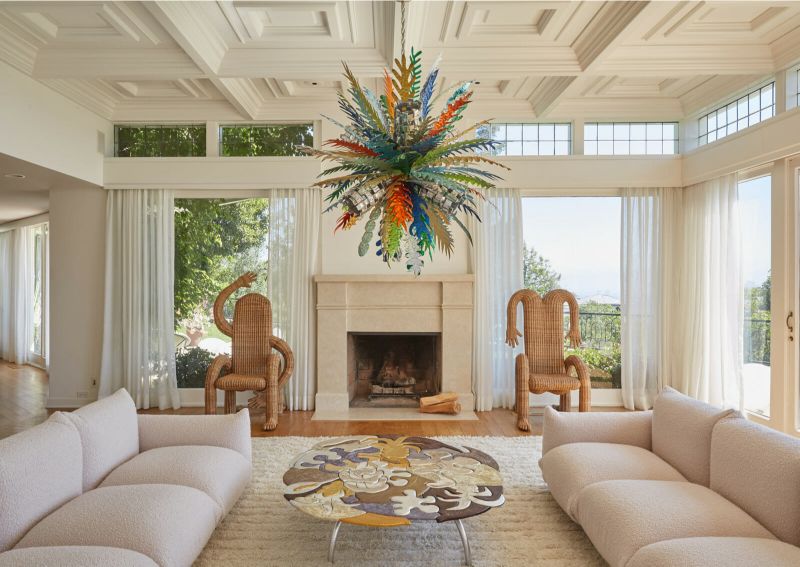
An exhibition at Casa Perfect in Los Angeles features the collection, “Forbidden Fruit.”
Image courtesy of: I LOBO YOU
Wolston has studios in both Medellin and Brooklyn. He first came to Colombia in order to study pre-Columbian ceramics. Now when he visits his secondary home base, it isn’t unusual to find him on trips to study pre-Columbian ceramics archives with anthropologists.
The Rhode Island School of Design graduate says, “There are always explanations for why people were using the forms that they are using. But as an artist I always think to myself, well, what if that vessel shaped like a body is not only used for that purpose?”
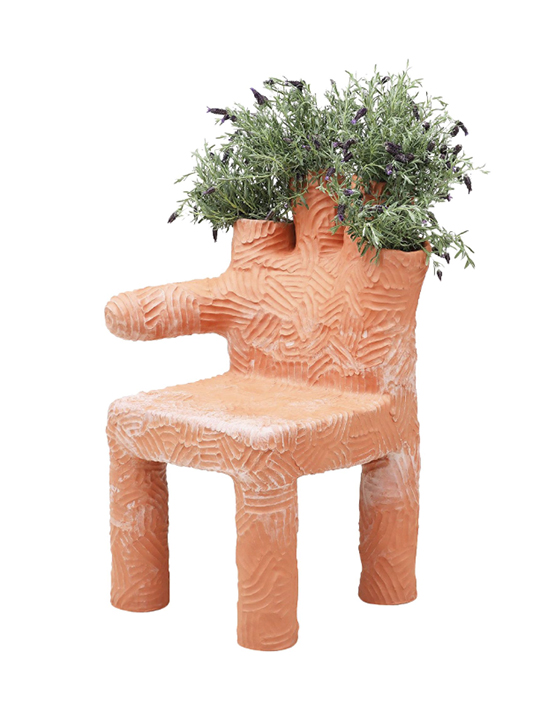
Terracotta “Colibri Plant Chair”.
Dimensions are: 33.5″ (height) x 24″ (width) x 18″ (diameter)
Wolston likes to integrate new material practices into traditional Columbian craft in order to create entirely new sculptural forms. The culture is quite diverse in that different regions have very specific arts and crafts. Spending so much time in Medellin has allowed Wolston to collaborate with local artists and to use local materials.
Image courtesy of: 1st Dibs
When he first arrived to Columbia on a Fulbright Grant, he intended to study how terra-cotta is used in brick factories. Bricks were handmade and then used in industrial ways with mechanized extruders and conveyor belts.
Organically, Wolston started to make sculptures with the materials from the brick factory and aluminum foundry nearby. However, he wasn’t impressed with his own work and he knew that he wanted to incorporate how the human body can be referenced in both direct and abstract ways. Creating something with more of a human relationship was vital so he started to make terra-cotta furniture… large, whimsical chairs with planters built into them.
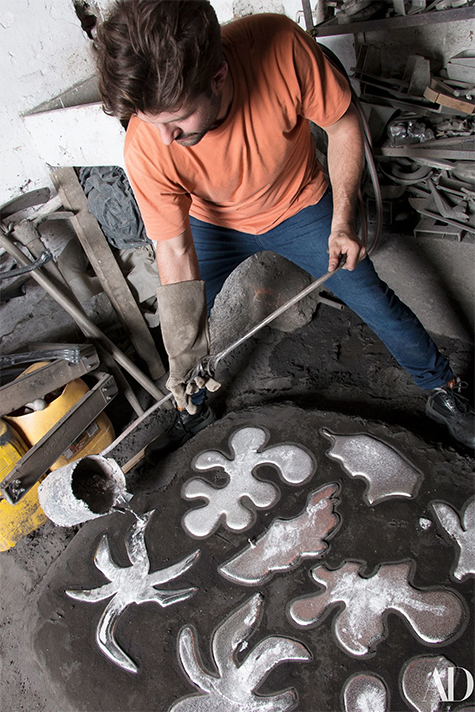
Wolston pours aluminum into a table mold.
Image courtesy of: Architectural Digest, photographed by: David Sierra
It is the process of gathering all the right materials which translates to the best part of Wolston’s job. Inside his Medellin studio, the artist works with four other team members who take turns traveling around the city and traversing the countryside to find out what different artisans are working with. He says, “For me, that exploration and discovery is the most exciting part of what we do.”